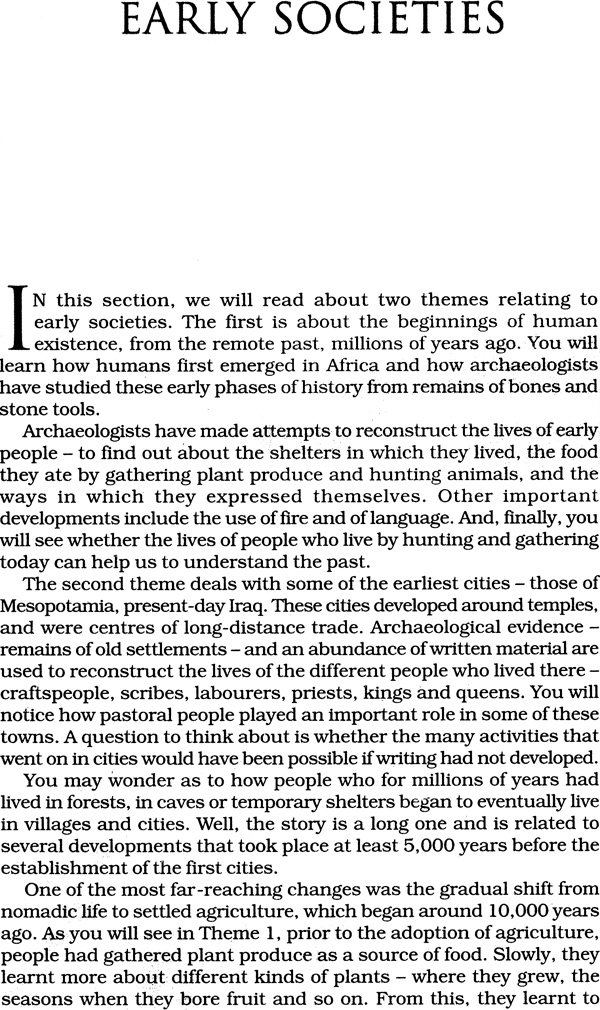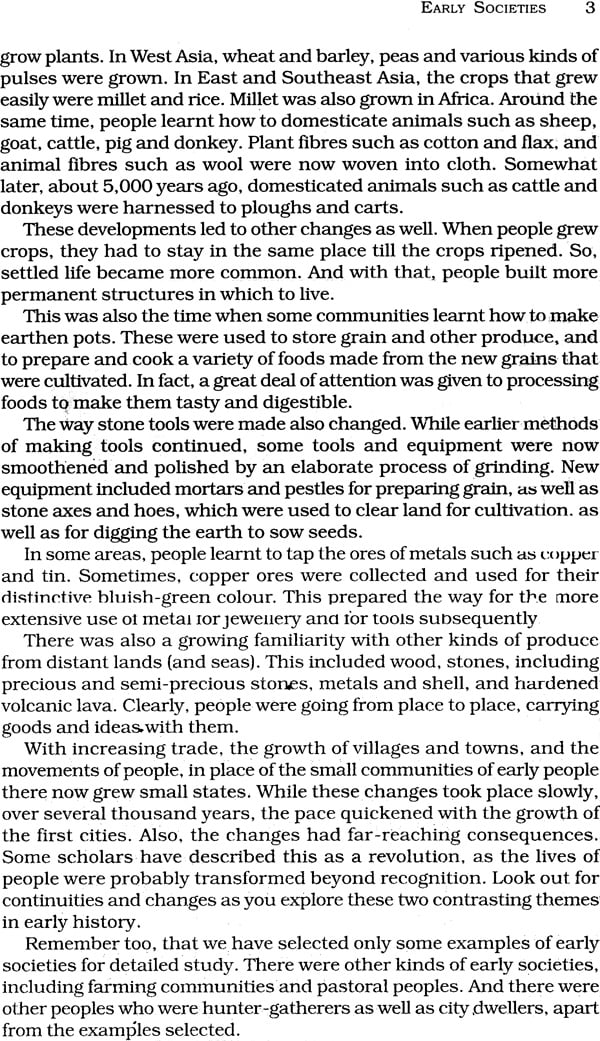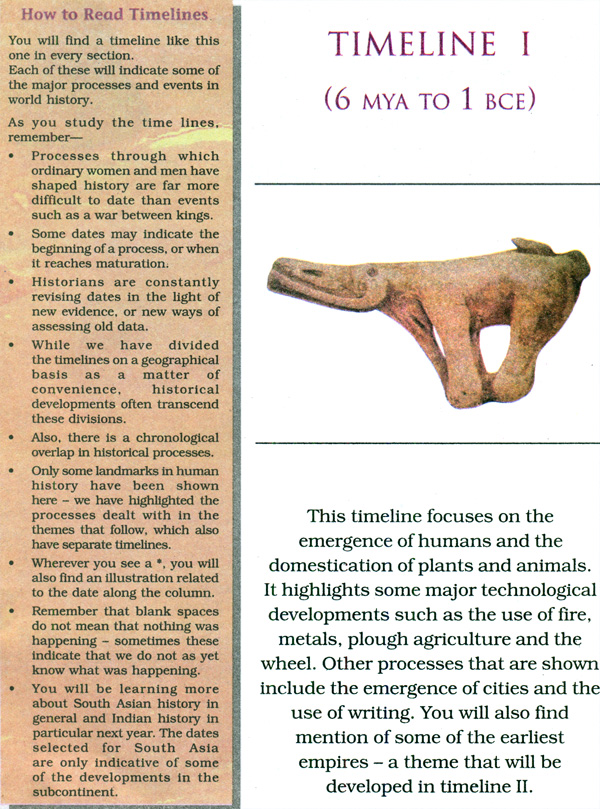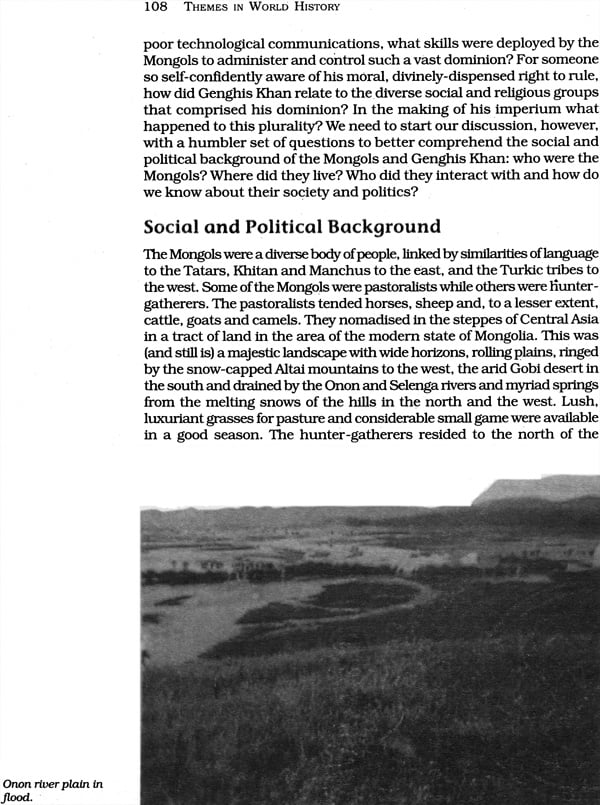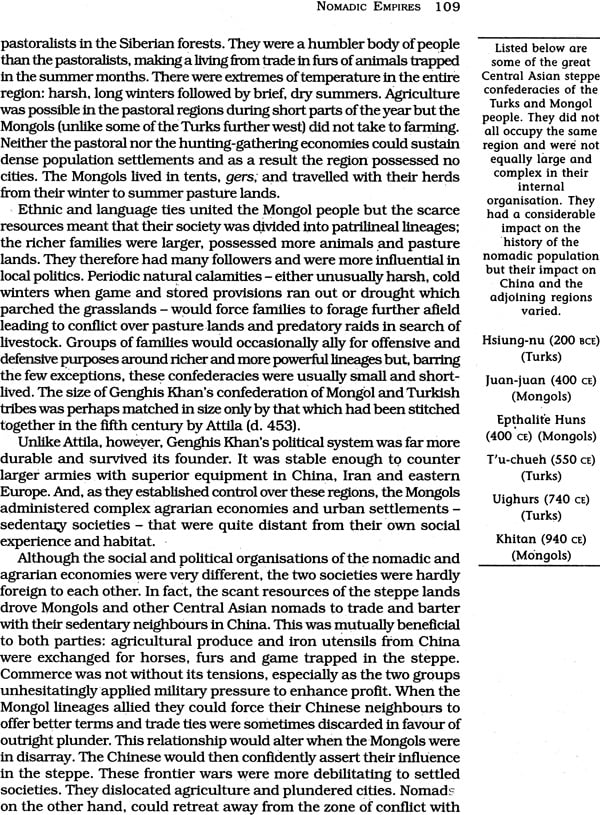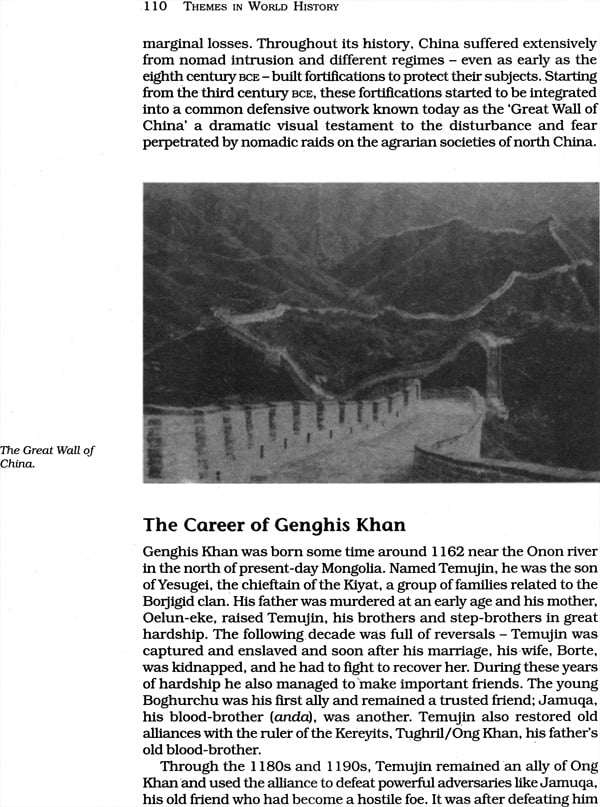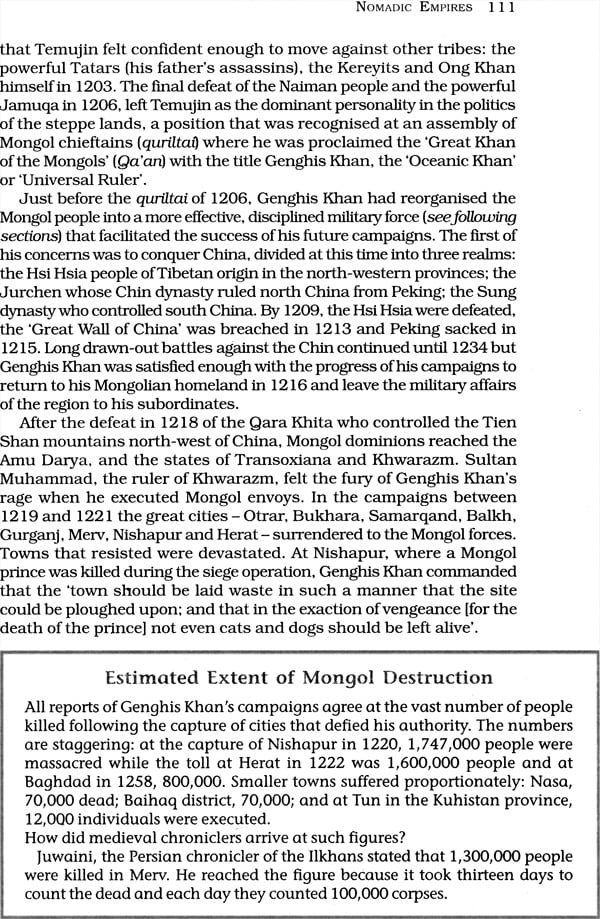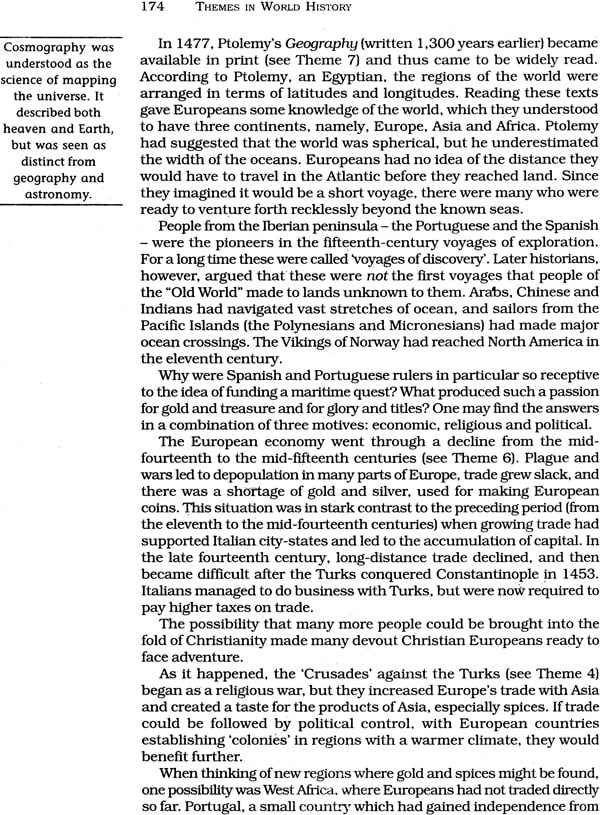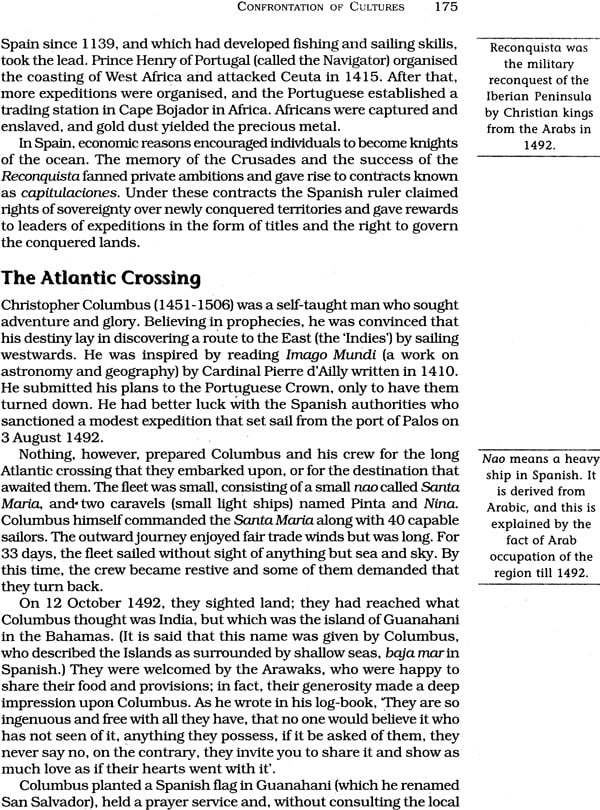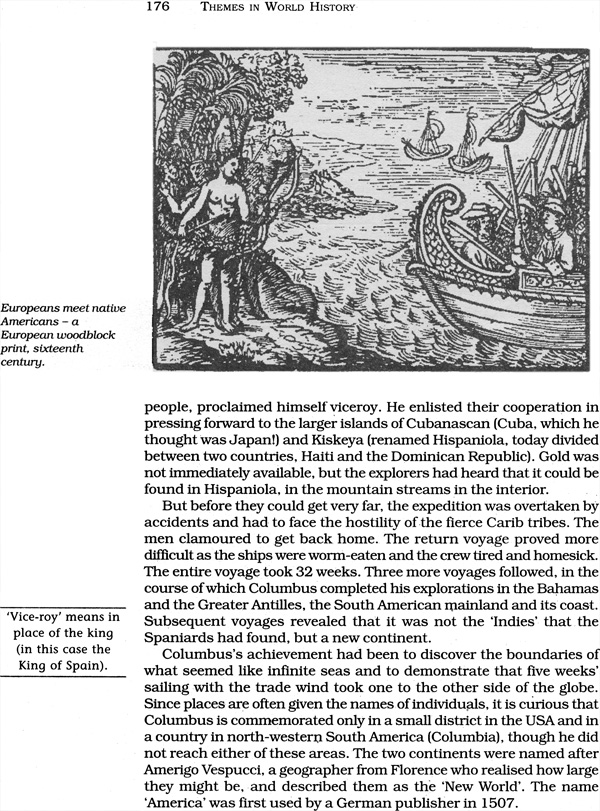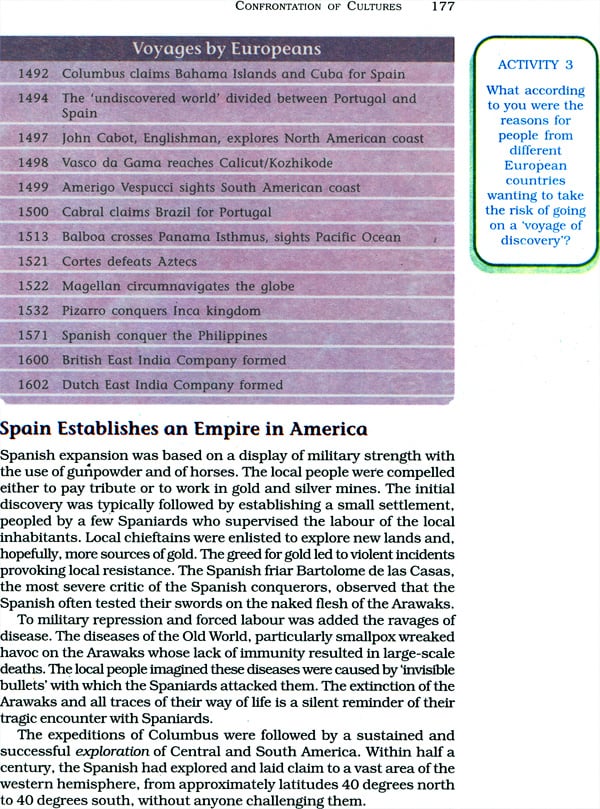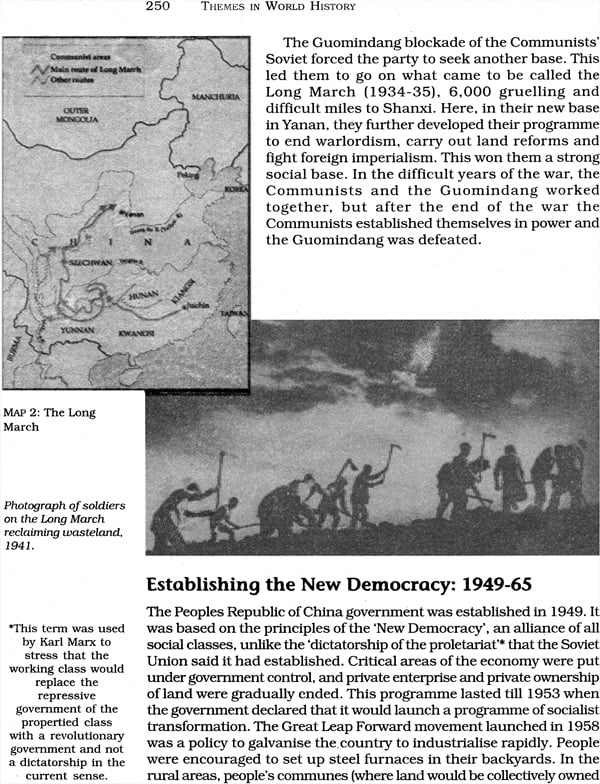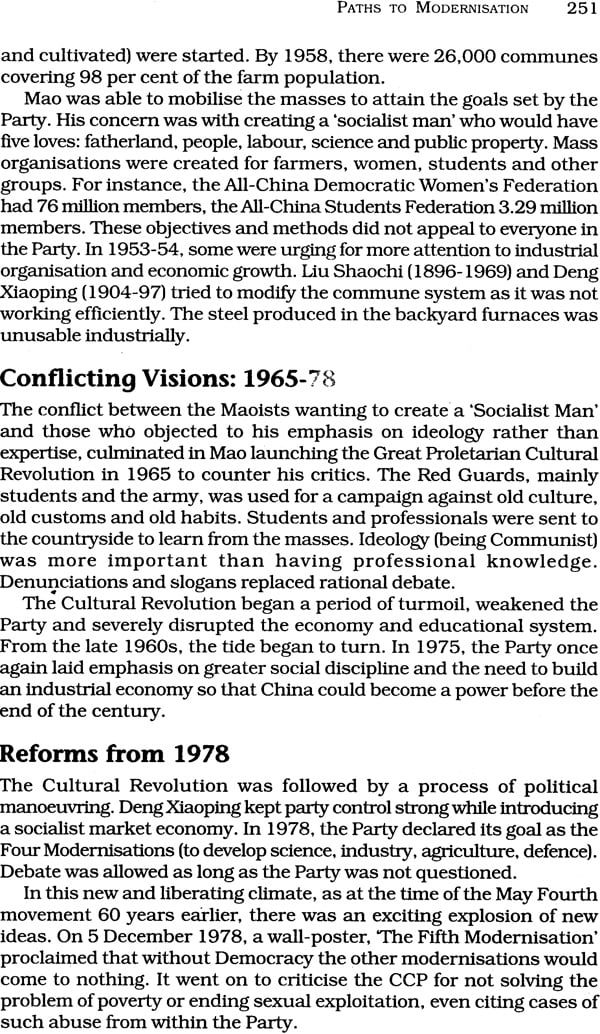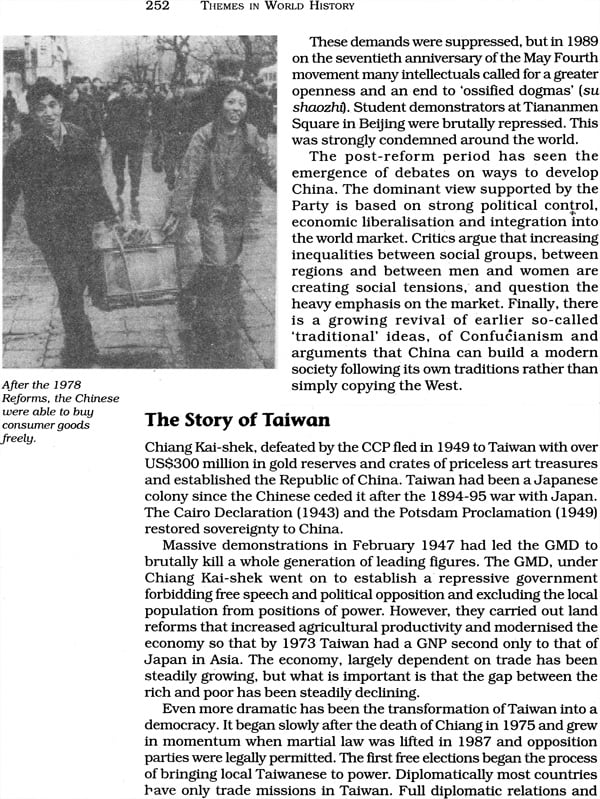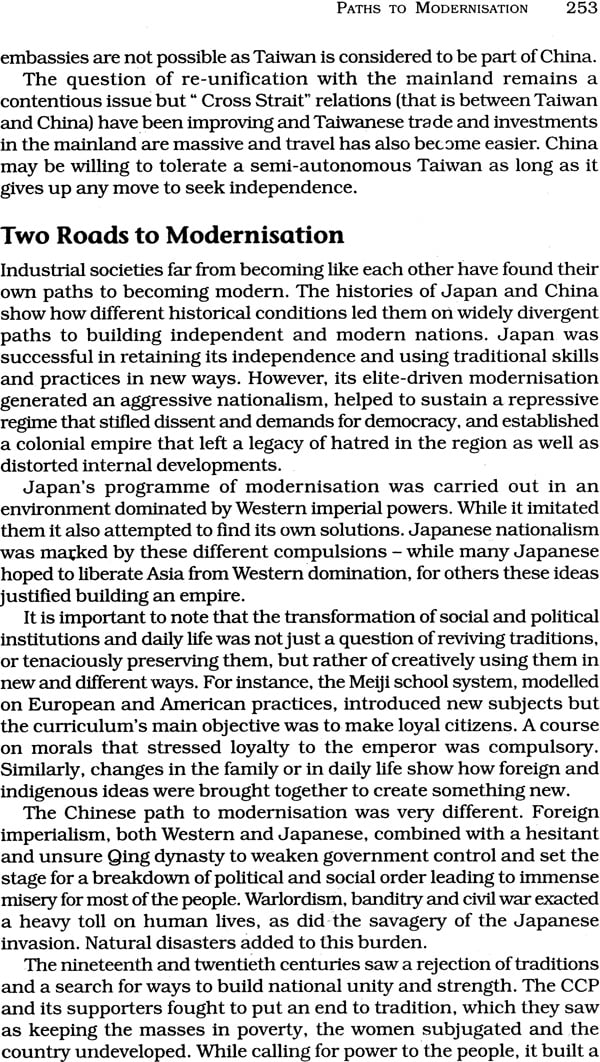
Themes in World History
Book Specification
| Item Code: | NAN376 |
| Publisher: | National Council of Educational Research and Training |
| Language: | English |
| Edition: | 2021 |
| ISBN: | 8174505482 |
| Pages: | 267 (Throughout Color and B/W Illustrations) |
| Cover: | Paperback |
| Other Details | 10.5 inch X 8.0 inch |
| Weight | 600 gm |
Book Description
The National Curriculum Framework (NCF), 2005, recommends that children's life at school must be linked to their life outside the school. This principle marks a departure from the legacy of bookish learning which continues to shape our system and causes a gap between the school, home and community. The syllabi and textbooks developed on the basis of NCF signify an attempt to implement this basic idea. They also attempt to discourage rote learning and the maintenance of sharp boundaries between different subject areas. We hope these measures will take us significantly further in the direction of a child-centred system of education outlined in the National Policy on Education (1986).
The success of this effort depends on the steps that school principals and teachers will take to encourage children to reflect on their own learning and to pursue imaginative activities and questions. We must recognise that, given space, time and freedom, children generate new knowledge by engaging with the information passed on to them by adults. Treating the prescribed textbook as the sole basis of examination is one of the key reasons why other resources and sites of learning are ignored. Inculcating creativity and initiative is possible if we perceive and treat children as participants in learning, not as receivers of a fixed body of knowledge.
These aims imply considerable change in school routines and mode of functioning. Flexibility in the daily time-table is as necessary as rigour in implementing the annual calendar so that the required number of teaching days are actually devoted to teaching. The methods used for teaching and evaluation will also determine how effective this textbook proves for making children's life at school a happy experience, rather than a source of stress or boredom. Syllabus designers have tried to address the problem of curricular burden by restructuring and reorienting knowledge at different stages with greater consideration for child psychology and the time available for teaching. The textbook attempts to enhance this endeavour by giving higher priority and space to opportunities for contemplation and wondering, discussion in small groups, and activities requiring hands-on experience.
The National Council of Educational Research and Training (NCERT) appreciates the hard work done by the textbook development committee responsible for this book. We wish to thank the Chairperson of the Advisory Group in Social Science, Professor Hari Vasudevan, the Chief Advisor, History, Professor Neeladri Bhattacharya and the Advisor for this book, Professor Narayani Gupta, for guiding the work of this committee. Several teachers contributed to the development of this textbook; we are grateful to their principals for making this possible. We are indebted to the institutions and organisations, which have generously permitted us to draw upon their resources, material and personnel. We are especially grateful to the members of the National Monitoring Committee, appointed by the Department of Secondary and Higher Education, Ministry of Human Resource Development under the Chairpersonship of Professor Mrinal Miri and Professor G. P. Deshpande, for their valuable time and contribution. As an organisation committed to systemic reform and continuous improvement in the quality of its products, NCERT welcomes comments and suggestions which will enable us to undertake further revision and refinement.
Contents
| Foreword | III | |
| Introduction | v | |
| Section I | Early Societies | |
| Introduction | 2 | |
| Timeline I (6 Mya to 1 BCE) | 4 | |
| Theme I | From the Beginning of Time | 8 |
| Theme 2 | Writing and City Life | 29 |
| Section II | Empires | |
| Introduction | 50 | |
| Timeline II (c. 100 BCA to 1300 CE) | 54 | |
| Theme 3 | An Empire Across Three Continents | 58 |
| Theme 4 | The Central Islamic Lands | 77 |
| Theme 5 | Nomadic Empires | 104 |
| Section III | Changing Traditions | |
| Introduction | 124 | |
| Timeline III (c. 1300 to 1700) | 128 | |
| Theme 6 | The Three Orders | 132 |
| Theme 7 | Changing Cultural Traditions | 152 |
| Theme 8 | Confrontation of Cultures | 168 |
| Section IV | Towards Modernisation | |
| Introduction | 186 | |
| Timeline IV (c. 1700 to 2000) | 189 | |
| Theme 9 | The Industrial Revolution | 196 |
| Theme 10 | Displacing Indigenous Peoples | 213 |
| Theme 11 | Paths to Modernisations | 231 |
| Conclusion | 255 |
